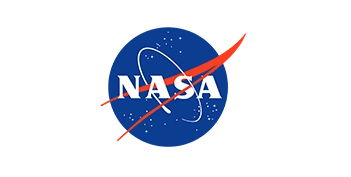Optimizing manufacturing process design for NASA

- Industry
- Manufacturing
- Location
- Reston, Virginia, United States
- Project goals
- Optimize manufacturing process design
-
-
Adoption of a mechanized welding approach to minimize weld defects and rework
-
-
Implementation of a crew-based approach to maximize crew skill level
-
-
Introduction of a schedule “dashboard” to increase visibility of the manufacturing flow
About the project
Science Applications International Corporation, Inc. is a leading provider of scientific, engineering, systems integration and technical services and products to all branches of the U.S. military, agencies of the U.S. Department of Defense, the intelligence community, the U.S. Department of Homeland Security (DHS) and other U.S. Government civil agencies.
SAIC used Simul8 to develop an integrative and interactive approach to optimize the manufacturing process design for the test flight article, the Ares 1-X Upper Stage Simulator (USS), for the future Ares 1 launch vehicle as part of NASA's program to return to the moon.
The manufacturing concept is to divide the entire upper stage of the vehicle into a series of cylindrical segments (called tuna cans) that stack together.
Primarily two facilities were being used in manufacturing the USS at the Glenn Research Center (GRC). Of critical interest was the attainment of the individual segment departures from the two manufacturing facilities and the GRC.
The project was highly complex with many elements: fabrication and material handling, limited floor space, integrating the creation of fabrication equipment and techniques of some segments into the IPT plan, a limited pool of skilled labor and executing engineering development tasks in a highly complex team structure, with the work spread across multiple design teams and contractors.
The key project objectives were:
- Optimize the design, fabrication, and test approach(es) to ensure that all of the USS segments are manifested for transport
- Optimize the utilization of team resources to achieve the targeted segment departure dates within budget for the USS IPT


"We chose Simul8 because it provides rapid model development, a high degree of control over entities within the simulation and superior graphical execution of the model that helps with troubleshooting and customer buy-in."
Sr. Operations Research Analyst/Engineer at SAIC

The result
Simul8 was used on the challenging process of manufacturing and mating the tuna cans in Building 50. Process details for the simulation were obtained from the process managers over repeated question-and-answer sessions as well as through weekly feedback sessions. This process helped mature the simulation, ignite process discussions among the process owners and gain confidence in results provided.
The resultant recommendations were considered to be highly effective by the USS IPT team and as a result, the IPT implemented the following changes:
- Adopt a mechanized welding approach to minimize weld defects and subsequent rework
- Shift design resources to finish the common segment design as quickly as possible
- Adopt a crew-based approach to maximize crew skill level
- Implement a schedule “dashboard” to increase visibility of segment manufacturing flow to the team and to the labor on the floor
- Implement flange storage recommendations
- Study moving the clock, mate and match drill and the secondary structure to Building 333
While the results obtained were directly beneficial, the study also helped the build team to consider aspects of their manufacturing problem and address fundamentals solely as part of collecting data to build the simulation.
Simul8 was cited by the program manager as providing the concrete results to justify altering the manufacture process to allow the team to deliver on schedule, contribute to the timely flight test of the new launch vehicle and subsequently allow the continuation of manned space flight.
Learn more about Simul8 for manufacturing process improvement
Find out more about how simulation is used by manufacturing organizations, read more case studies and access a range of learning resources.
Learn more